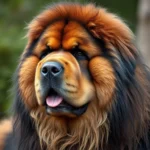
Introduction
Dogs have been our loyal companions for thousands of years, and their diversity is one of the most fascinating aspects of human-animal relationships. Every dog breed carries unique traits, behaviors, and histories that enrich our understanding of these beloved pets. Among the myriad of breeds, the Poogle stands out as a delightful mix of intelligence and playfulness.
Originating from the cross between a Poodle and a Beagle, the Poogle combines the best traits of both parent breeds. While exploring the Poogle, we’ll also delve into other popular dog breeds, helping potential owners make informed decisions about their future furry friends.
Understanding Dog Breeds
What are Dog Breeds?
A dog breed is a specific group of domestic dogs that share particular characteristics, such as physical appearance, temperament, and behavior. Breeding plays a significant role in enhancing these traits, leading to the development of distinct breeds that suit various roles and lifestyles.
Dog breeds can serve many purposes, from herding and hunting to companionship and service. Understanding the nuances of different breeds is essential for anyone considering adding a canine companion to their family.
The History of Dog Breeding
Dog domestication dates back over 15,000 years, evolving from wolves into the diverse breeds we see today. Early humans selectively bred dogs for specific tasks, such as hunting, guarding, and herding. This historical significance is evident in the characteristics of breeds that have emerged, each tailored to meet the needs of their human partners.
Classification of Dog Breeds
Dog breeds are categorized into groups by organizations such as the American Kennel Club (AKC). These groups include:
- Sporting: Active and alert, these breeds are great companions for outdoor activities (e.g., Labrador Retrievers).
- Herding: Intelligent and trainable, these dogs excel in managing livestock (e.g., German Shepherds).
- Working: Strong and capable, these breeds often perform tasks such as guarding or pulling sleds (e.g., Rottweilers).
- Terriers: Energetic and feisty, these dogs were originally bred to hunt vermin (e.g., Jack Russell Terriers).
- Toy: Small and affectionate, these breeds are perfect for companionship (e.g., Chihuahuas).
Each breed’s classification highlights its unique traits and historical roles, helping potential owners select the right fit for their lifestyle.
The Poogle Breed
What is a Poogle?
The Poogle is a charming hybrid breed that results from crossing a Poodle and a Beagle. This mix brings together the Poodle’s intelligence and trainability with the Beagle’s friendly disposition. Poogles are known for their playful and affectionate nature, making them great family pets.
Physical Characteristics
Poogles can vary in size, depending on the size of the Poodle parent (standard, miniature, or toy). Generally, they weigh between 15 to 30 pounds and stand about 10 to 15 inches tall.
The coat of a Poogle can also vary, featuring the curly, hypoallergenic fur of the Poodle or the short, smooth coat of the Beagle. Common coat colors include:
- Black
- Brown
- White
- Tan
- Various combinations of these colors
Temperament and Behavior
The temperament of a Poogle is a delightful mix of its parent breeds. They are generally:
- Friendly: Poogles are known for their sociable nature, making them excellent companions both for families and individuals.
- Intelligent: Thanks to their Poodle lineage, they are quick learners and can be easily trained.
- Energetic: Poogles enjoy playtime and require regular exercise to keep them happy and healthy.
Early socialization is crucial for Poogles to develop into well-rounded dogs. They usually get along well with children and other pets, though supervision is recommended during playtime.
Health Considerations
While Poogles are generally healthy, they can inherit health issues from their parent breeds. Some common health concerns include:
- Hip dysplasia
- Eye disorders
- Ear infections (especially due to their Beagle lineage)
The average lifespan of a Poogle ranges from 12 to 15 years. Regular veterinary check-ups, a balanced diet, and preventative care can help maintain their health.
Training and Exercise
Training a Poogle can be a rewarding experience. Their intelligence and eagerness to please make them relatively easy to train with positive reinforcement techniques. Consistent training sessions can help them learn commands and tricks quickly.
In terms of exercise, Poogles require moderate physical activity. Daily walks, playtime in the yard, or engaging in dog sports like agility can keep them stimulated and healthy.
Other Popular Dog Breeds
Labrador Retriever
The Labrador Retriever is one of the most beloved dog breeds worldwide. Known for their friendly and outgoing nature, Labs are great family pets and excellent working dogs. They typically weigh between 55 to 80 pounds and are renowned for their intelligence and trainability. Regular exercise is essential for Labs, as they are high-energy dogs that thrive on physical activity.
German Shepherd
The German Shepherd is a versatile breed known for its loyalty and intelligence. They are often employed in police and military roles due to their protective instincts and trainability. With a weight range of 50 to 90 pounds, German Shepherds are strong and confident. They require regular exercise and mental stimulation to stay happy, making them ideal for active families.
Bulldog
The Bulldog is a unique breed characterized by its loose, wrinkled skin and stocky build. Weighing between 40 to 50 pounds, Bulldogs are gentle and affectionate. They are known for their calm demeanor, making them suitable for apartment living. However, they can be prone to health issues, particularly respiratory problems due to their brachycephalic nature, so regular veterinary care is important.
Golden Retriever
The Golden Retriever is celebrated for its friendly and patient nature. Weighing between 55 to 75 pounds, Goldens are intelligent and versatile, making them excellent family dogs and service animals. They enjoy outdoor activities and require regular exercise to keep their energy levels in check. Grooming is essential for this breed due to its thick, water-repellent coat.
Dachshund
The Dachshund, known for its long body and short legs, is an affectionate and spirited breed. Weighing between 16 to 32 pounds, they come in standard and miniature sizes. Dachshunds are curious and brave, but they can also be stubborn, which may require dedicated training efforts. They enjoy moderate exercise and thrive in environments where they can explore and play.
Choosing the Right Dog Breed for You
Assessing Lifestyle and Environment
Before bringing a dog into your home, it’s essential to evaluate your living situation. Consider factors such as:
- Space: Larger breeds may require more room, while smaller dogs can adapt to apartment living.
- Activity level: Assess your lifestyle to determine how much exercise and playtime you can provide.
- Family dynamics: If you have children or other pets, consider breeds that are known for their compatibility.
What to Consider When Choosing a Breed
When selecting a breed, think about:
- Size: Large dogs need more space and may be harder to manage for first-time owners.
- Energy level: High-energy breeds require more exercise, while low-energy breeds may be content with short walks.
- Grooming needs: Some breeds require frequent grooming, while others have low-maintenance coats.
The Adoption Process
Adopting a dog from a shelter or rescue can be a fulfilling experience. Look for local shelters or breed-specific rescues to find your future pet. The adoption process often includes:
- Filling out an application
- Meeting potential pets
- Paying an adoption fee
Consider adopting an older dog, as they often have established temperaments and can provide companionship without the challenges of puppy training.
Caring for Your Dog
Basic Dog Care
Proper nutrition is crucial for your dog’s health. Consider these guidelines:
- Choose a high-quality dog food appropriate for your dog’s age and size.
- Maintain a regular feeding schedule to promote healthy eating habits.
- Always provide access to fresh water.
Grooming needs vary by breed. Regular brushing, bathing, and nail trimming are essential to keep your dog clean and comfortable.
Training and Socialization
Training and socialization are vital for your dog’s development. Begin training early, using positive reinforcement techniques, such as treats and praise. Socialize your dog with other pets and people to help them become well-adjusted adults.
Regular Health Check-ups
Routine veterinary visits are essential for monitoring your dog’s health. Common vaccinations include:
- Rabies
- Distemper
- Parvovirus
Regular check-ups also help identify potential health issues early on, ensuring your dog lives a long, healthy life.
Conclusion
Understanding dog breeds is crucial for anyone considering adding a canine companion to their family. The Poogle, with its delightful mix of Poodle and Beagle traits, is a fantastic choice for many families. However, it’s essential to explore various breeds to find the perfect match for your lifestyle and needs. By choosing wisely and caring for your dog responsibly, you can build a lasting and loving relationship with your furry friend.









